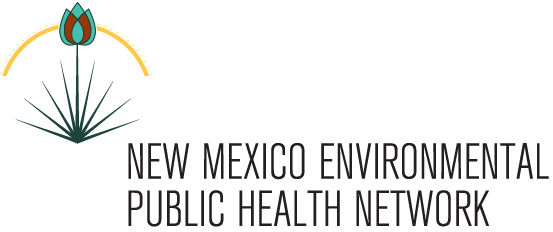Jun 8, 2023 –
As many of you know, the Public Health and Climate Resiliency Act, House Bill 42/Senate Bill 5, the priority legislation for the New Mexico Public Health Environmental Network and a group of our partners, did not make it all the way through the session.
The legislation called for creating a climate and public health program at the New Mexico Department of Health, establishing a Public Health and Climate Resiliency Fund to assist local communities and to support communities with additional assistance through mechanisms such as technical expertise and grant support.
The good news is that the bill gained tremendous momentum with many individuals and organizations supporting the bill, both in writing and in committee. We also had 12 legislative sponsors from various areas of the state and more than 1,000 letters of support were sent to policymakers in support of the bill. See the legislative fact sheet at https://www.nmvoices.org/archives/17278
We want to thank all of you who helped with this bill by developing legislative strategy, calling or writing legislators, and showing up in committee in support of the legislation. We are already developing a plan to push this as a priority in the 2024 session.
A couple of environmental public health pieces of legislation that did pass, include the following:
San Juan Cleanup, House Bill 142, requires the Environment Department to hire third-party overseers to ensure the remediation and demolition of San Juan Generating Station coal plant and mine are done properly and won’t let contamination leak out and continue to impact nearby families and air, soil and water.
Storage of Certain Radioactive Waste, Senate Bill 53, prohibits the storage of high-level radioactive waste in New Mexico without the state’s consent and would only allow that storage to occur if a permanent repository for radioactive waste is operating.
American Lung Association Releases 2023 State of the Air Report
Lung Association released “State of the Air” 2023, the latest edition of their annual report that ranks cities and grades counties for their levels of ozone pollution and for daily and year-round particle pollution. The report covers air pollution data from 2019, 2020 and 2021. Visit Lung.org/sota to get local results.
Two New Mexico regions – the Las Cruces/El Paso area and the Albuquerque/Santa Fe area were ranked among the top 25 of most polluted areas for ozone. Key findings of this year’s report include:
- More than 1 in 3 people (nearly 120 million) live in counties that had unhealthy levels of ozone or particle pollution. That’s fewer people than in last year’s report.
- The good news: ozone pollution generally improved across the nation. 103 million people lived in an area with unhealthy ozone pollution, which is fewer than last year’s report.
- However, more people lived in counties that experienced unhealthy spikes in particle pollution than in last year’s report, totaling 63.7 million people. Climate change is driving more frequent and intense wildfires in the West, which is home to 23 of the 25 most polluted cities for short-term particle pollution.
- The report revealed that fewer people – 18.8 million in total – were living in a county that received a failing grade for annual particle pollution.
- There continue to be inequities in exposure to air pollution in the report. People of color were 64% more likely than white people to live in a county with a failing grade for at least one measure, and 3.7 times as likely to live in a county with a failing grade for all three measures.
For more information on ozone, see https://www.lung.org/clean-air/outdoors/what-makes-air-unhealthy/ozone.
Dust an Increasing Environmental Health Concern
New Mexico spring weather is often characterized by high winds and dust storms and this spring has been no exception. As our climate continues to change and drought is more frequent, dust storms are increasingly becoming a concern for public health. Airborne dust can have negative impacts on health, especially for more vulnerable populations, while also reducing air visibility, leading to dangerous and sometimes fatal accidents (https://www.nbcnews.com/science/environment/dust-storms-killed-hundreds-are-growing-problem-parts-us-rcna82889)
Dust particles vary in size from coarse (non-inhalable), to fine (inhalable), to very fine (respirable). Coarse dust particles generally only reach as far as the inside of the nose, mouth or throat. Smaller or fine particles, however, can get much deeper into the sensitive regions of the respiratory tract and lungs and have a greater potential to cause serious harm to your health.
Commonly, particles in airborne dust tend to be coarse or non-respirable and do not pose a serious health threat to the general public. However, people with respiratory conditions, such as asthma and emphysema, may experience difficulties.
The most common symptoms experienced during a dust storm are irritation to the eyes and upper airways. Vulnerable populations including infants and young children, the elderly, people with respiratory conditions and people with heart disease are more vulnerable to dust related respiratory illness. Exposure to airborne dust for these populations can trigger asthma attacks, cause serious breathing problems, contribute to cardiovascular and heart disease and contribute to reduced life span.
There are steps you can take to protect your health during dust storms including staying indoors as much as possible, closing windows, doors and vents, covering your nose and mouth and wearing a mask that can block dust particles.
For driving safely during dust storms, see: https://www.weather.gov/safety/wind-dust-storm.
See the New Mexico Environment Department and New Mexico Health Department’s brochure on dust storms and health.
https://www.nmhealth.org/publication/view/marketing/241/#:~:text=Of%20course%2C%20during%20severe%20dust,coughing%2C%20wheezing%20and%20runny%20noses.
Other Items of Interest
The New Mexico Environment Department just released its Enforcement Watch https://www.env.nm.gov/enforcement-watch/. The Enforcement Watch website is a listing of all active and resolved enforcement cases. with transparency of our enforcement efforts across the state to protect their health, safety and our environment,
The U.S. Environmental Protection Agency (EPA) proposed new carbon pollution standards for coal and natural gas-fired power plants that will protect public health, reduce harmful pollutants and deliver up to $85 billion in climate and public health benefits over the next two decades. https://www.epa.gov/newsreleases/epa-proposes-new-carbon-pollution-standards-fossil-fuel-fired-power-plants-tackle




